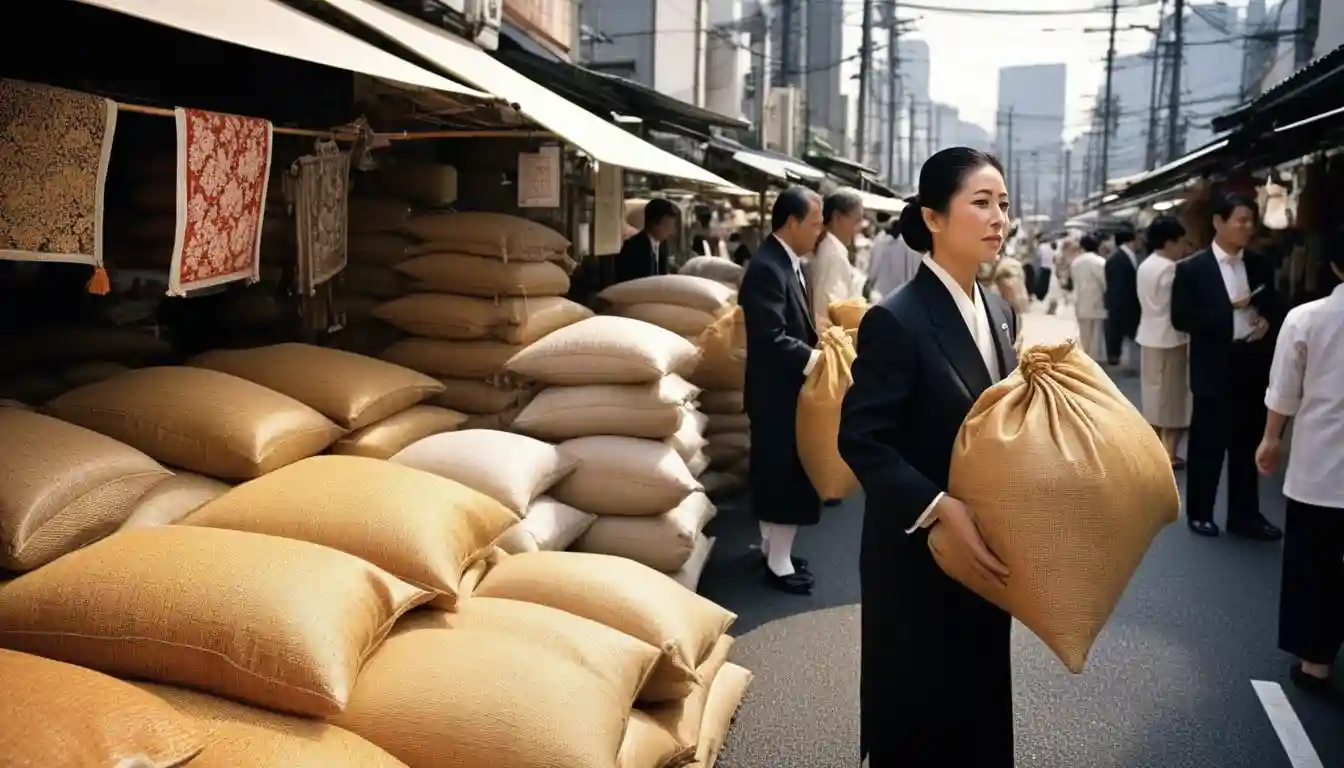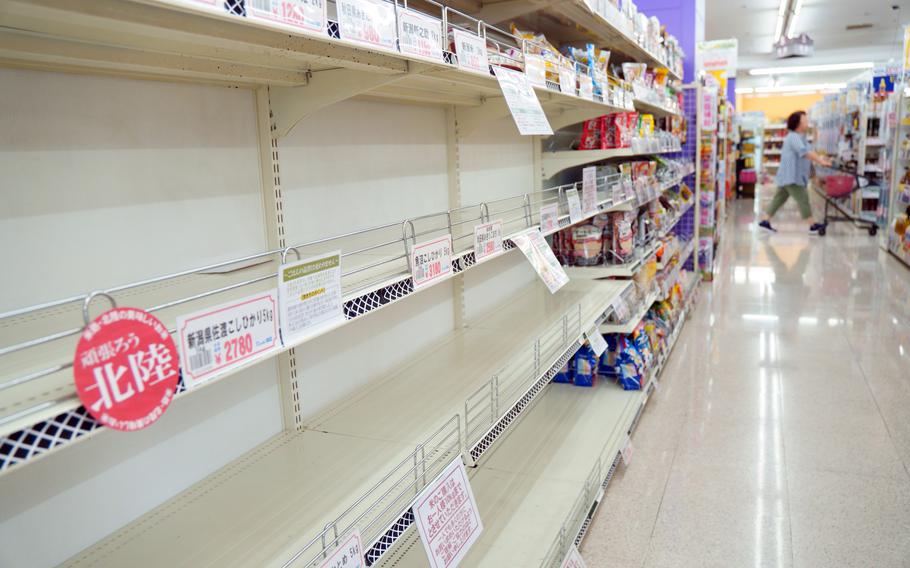
Japan Agrees to Boost US Rice Imports by 75% in Historic Trade Deal to Avoid Trump Tariffs
When Rice Becomes a Weapon: How Japan's Agricultural Surrender Reveals New Trade Realities
A 75% surge in U.S. rice imports exposes the hidden power dynamics reshaping global commerce
In the seemingly mundane world of agricultural trade quotas, a single number buried within the massive U.S.-Japan Strategic Trade Agreement announced July 23, 2025, reveals more about modern geopolitics than entire diplomatic treaties. Japan's commitment to immediately increase U.S. rice imports by 75% represents far more than a commercial transaction—it signals the weaponization of food security in an era where trade wars have evolved into sophisticated tools of statecraft.
To understand why this rice provision matters, one must first grasp what Japan surrendered. For over seven decades, rice has occupied a sacred place in Japanese society, representing not merely sustenance but cultural identity, rural political power, and national sovereignty. The grain that sustained samurai armies and survived wartime rationing has been zealously protected by import barriers that made Japanese rice among the world's most expensive. A single bag of domestic rice can cost ten times the global market price.
The broader trade agreement that delivered this agricultural breakthrough emerged from escalating pressure as President Trump threatened a devastating 25% tariff on all Japanese imports unless a comprehensive deal materialized by August 1, 2025. With bilateral trade reaching nearly $230 billion in 2024 and Japan running a $70 billion surplus, the stakes could not have been higher. Rather than face potential economic devastation, Tokyo chose strategic capitulation, agreeing to a managed trade framework that includes $550 billion in direct U.S. investment commitments alongside the agricultural concessions.

(Japan's Rice Crisis as of July 23, 2025 — Key Indicators and Impacts on Economy, Society, and Policy)
| Category | Details |
|---|---|
| Price Surge | Rice prices nearly doubled since 2024; 5kg costs ¥4,000–4,500 (~$27). |
| Supply Shortage | Harvests hit by heat and extreme weather; reduced domestic production. |
| Government Stockpiles | Reserves depleted from ~1M to ~100K tonnes after major emergency releases. |
| Cultural Impact | Rice rationing in supermarkets; removed from some school meals. |
| Sake Industry | Severe rice shortages affecting sake production; price hikes expected. |
| Political Response | Government criticized for slow action; crisis central to elections. |
| Structural Challenges | Aging farmers, rural depopulation, high costs hinder production recovery. |
| Import Issues | High tariffs discourage imports; WTO quotas allow some inflow, underused. |
| Future Outlook | Policy changes aim to boost production from 2027; short-term crisis ongoing. |
The Sacred Grain Under Siege
Understanding Japan's rice capitulation requires appreciating the crop's unique position in Japanese political economy. Unlike wheat or corn, which function primarily as commodities, rice in Japan operates as a quasi-currency of rural political loyalty. The Liberal Democratic Party has maintained power for most of the post-war era partly through an intricate system of agricultural subsidies and protection that keeps rural constituencies aligned with conservative governance.
Japanese rice farmers, numbering roughly 1.6 million households, typically cultivate plots smaller than two hectares—postage-stamp operations by American standards where mechanized farms span thousands of acres. These small-scale producers have survived through a combination of import barriers, price supports, and cultural reverence that treated rice farming as a national duty rather than merely an economic activity. The average Japanese rice farmer is now over 65 years old, yet the political machinery protecting their livelihood has remained remarkably durable.
The agreement's 75% import increase shatters this protective framework with stunning abruptness. American rice producers, primarily concentrated in Arkansas, Louisiana, California, and Texas, operate on industrial scales that can deliver grain at roughly one-third the cost of domestic Japanese production. The immediate quota expansion, combined with broader commitments to eliminate longstanding restrictions on American agricultural products, threatens to flood Japanese markets with competitively priced alternatives.
Market dynamics suggest this shift will be irreversible. Chicago rice futures rallied 6% within hours of the announcement, as traders recognized that Japanese import commitments would create sustained demand for American grain. California's Calrose variety and Arkansas long-grain rice, previously marginal players in Japanese markets, now stand to capture significant market share from domestic producers who cannot compete on price without continued government protection.
Political Earthquakes in Rural Japan
The rice concession's political implications extend far beyond agricultural economics. Japan's ruling coalition under Prime Minister Shigeru Ishiba already faces significant challenges, with approval ratings hovering near historic lows and rural constituencies increasingly skeptical of Tokyo's ability to protect traditional industries. The rice import agreement threatens to accelerate rural political realignment that could reshape Japanese governance.
Some analysts warn that agricultural stakeholders may demand offsetting subsidies or compensation packages that could strain government finances already stretched by demographic pressures and defense spending increases. The agreement requires the Japanese Diet to appropriate funding for implementation, creating multiple opportunities for political opposition to complicate execution. Rural legislative representatives, historically influential beyond their numerical strength, face constituent pressure that could manifest in parliamentary resistance or demands for policy modifications.
The timing compounds these political risks. Japan's agricultural sector employs roughly 3% of the workforce but commands disproportionate political influence through rural electoral districts that historically favor the ruling Liberal Democratic Party. The rice import commitment arrives as this traditional support base already faces pressure from demographic decline, urbanization, and generational change that has steadily eroded rural political power.
Strategic Implications Beyond Agriculture
The rice provision illuminates broader strategic realities reshaping international commerce in an era of managed trade relationships. Unlike traditional free trade agreements that aimed to reduce barriers uniformly, the U.S.-Japan deal represents targeted economic statecraft designed to achieve specific political and strategic objectives rather than maximize overall economic efficiency.
American negotiators clearly recognized rice's symbolic and political significance within Japanese society, making agricultural market access a central demand that forced Tokyo to choose between economic nationalism and trade relationship stability. This approach—targeting culturally sensitive sectors to extract broader concessions—suggests a new template for trade negotiations that treats commerce as an extension of geopolitical competition.
The agreement's structure also reveals how trade policy has evolved into a tool for supply chain realignment amid growing concerns about Chinese economic influence. Japan's broader $550 billion investment commitment, spanning semiconductors, defense equipment, and energy infrastructure, reflects American priorities for reducing dependence on Chinese manufacturing while strengthening alliance relationships through economic integration.
Market Winners and Losers
The rice import surge creates clear winners and losers across multiple sectors. American agricultural cooperatives, particularly those concentrated in the Mississippi Delta and Central Valley, stand to benefit immediately from expanded market access that has eluded them for decades. Bunge Limited and Archer-Daniels-Midland, with established export terminal infrastructure, appear positioned to capture significant share of the expanded trade flows.
Japanese implications prove more complex. Domestic rice producers face existential challenges as American imports capture market share previously protected by artificial barriers. However, Japanese food processing companies and retailers may benefit from access to lower-cost raw materials that could improve their competitive position both domestically and internationally.
The broader food security implications deserve careful consideration. Japan's agreement to dramatically increase agricultural imports occurs against a backdrop of global supply chain vulnerabilities exposed by recent geopolitical tensions and climate disruptions. While economic efficiency suggests benefits from agricultural trade liberalization, strategic planners may question the wisdom of increased food import dependence during a period of heightened international tensions.
The New Rules of Economic Warfare
Japan's rice capitulation exemplifies how trade policy has evolved from commercial negotiation into sophisticated economic statecraft. The agricultural concessions demonstrate that even culturally sacred economic sectors can become bargaining chips when faced with sufficient pressure from major trading partners wielding credible threats of economic disruption.
This development signals broader implications for international commerce as other nations face similar pressures to choose between economic nationalism and trade relationship stability. The European Union, South Korea, Taiwan, and other major trading partners confronting August deadlines for comprehensive trade agreements must now calculate whether their own protected sectors can withstand similar pressure tactics.
The rice provision also illustrates how agricultural trade has become intertwined with broader geopolitical competition. American insistence on Japanese market access reflects not merely commercial interests but strategic objectives to strengthen alliance relationships while creating economic dependencies that reinforce security cooperation. Food security increasingly functions as an element of national security strategy rather than purely economic policy.
Looking ahead, the rice agreement suggests that future trade negotiations will likely target sectors with high political sensitivity rather than focusing on economically optimal outcomes. This approach treats commerce as a continuation of geopolitics by other means, where the goal involves reshaping relationships and dependencies rather than simply maximizing trade volumes or economic efficiency.
The transformation of rice from cultural symbol to geopolitical bargaining chip reveals how quickly sacred economic arrangements can crumble under sufficient pressure. For sophisticated market participants, this development signals that no sector remains immune from trade policy pressures when broader strategic relationships are at stake.
Investment professionals should monitor agricultural futures markets for continued volatility as implementation details emerge and Japanese political responses crystallize.